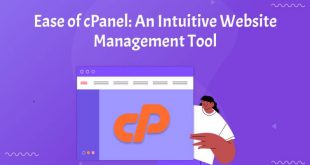Hello there, today in this article, we are going to discuss eCommerce customer segmentation – where to start. So keep reading.
If you own or work for an eCommerce business; you are aware that the best way to drive sales is to pinpoint and address the exact needs of your customers.
However, the more customers you gain — or the more customers you want to target — the less likely it is that they all share the exact needs. It will also become increasingly difficult to target them all on a personalized level.
That is where customer segmentation comes in. Segmenting your customers according to specific criteria enables you to better tailor your digital marketing strategy to meet a range of demands across different customer groups. So let’s start our topic: eCommerce customer segmentation.
The Basics of Customer Segmentation

Accurate customer segmentation can bring a wealth of benefits to an eCommerce business, starting from more effective messaging. Tailored marketing approaches allow you to identify and effectively target the customer segments that yield the greatest returns on your marketing efforts.
This method also helps you better understand how your customers prefer to be approached, e.g. through email (which is made even easier through email segmentation), social media, or other communication channels.
Customer segmentation also enables your sales team to convert more leads by concentrating their efforts on the segments that have already proven to be effective. Your approach to existing and loyal customers could become even more personalized and guarantee a higher return rate.
Finally, segmentation helps clearly ascertain how much you need to invest to contact, convert, and upsell to particular customer groups. Depending on your niche, it could be more or less expensive to reach customers.
Typical Approaches to Segmentation
There are four universal approaches to customer segmentation:
- Geographic segmentation i.e. by country, state, city, and/or town of residence
- Demographic segmentation i.e. by gender, age, education, marital status, etc.
- Psychographic segmentation i.e. by general interests, values, and attitudes
- Behavioral segmentation i.e. by purchasing or browsing habits and product use
Marketing campaigns nowadays are often developed with all of the above approaches in mind, but predominantly according to specific habits or behaviors that tie entire groups together.
Getting Started with Customer Segmentation

Effective customer segmentation involves categorizing customers into groups based on how they interact (or have previously interacted) with your business. This categorization helps you carefully assess buyer habits; their readiness to make a purchase, cart abandonment frequency; and similar pain points you can directly address to generate more successful conversions.
That being said, comprehensive customer analysis allows for something called micro-segmentation marketing — focusing on more minute common characteristics that allow you to accurately and effectively personalize your marketing strategy for the customer segments you identify.
Performing Customer Analysis
Businesses now have considerably greater access to in-depth knowledge, information, and data about their audiences. This gives them the capacity to create intricate customer profiles. With the use of automation tools, you can successfully segment customers who are already in your database on a micro level. Below are some examples of these kinds of segments.
Buyer Personas
Buyer personas are developed to symbolize various buyer types that belong to a certain demographic group; share a certain attitude and/or behavior set, or interact with your brand or product in a similar manner.
Moreover, Buyer personas represent groups that you create to reflect the various buyers you frequently encounter in your marketing and sales process. The type of industry you’re in, company size, and region may help identify your customers’ buyer personas.
For example, if you’re in the business of selling software for personal trainers, your main buyer persona will most likely belong to a completely different demographic, psychographic, and behavioral segment than if you were selling professional makeup brushes and tools.
Therefore, before you start googling examples of buyer personas for inspiration; analyze your own customer database to glean information about what kind of characteristics are universal among the people who buy your products. Then, narrow it down by including more specific criteria, until you have your typical buyer persona fleshed out.
Lifecycle Stage

The lifecycle stage describes the phase of the sales cycle that a specific lead or contact is in currently. It’s a great place to start when segmenting your audience because the lifecycle stage of each interaction plays a significant role in how you connect with them.
For instance, the conversation you should have with a fresh lead should be significantly different from the interaction you may have with a well-established customer who is likely to make another purchase soon.
Different lifecycle stages include subscriber (a person who has subscribed to your mailing list or newsletter), qualified lead (a person defined by your marketing or sales team as ready to become a potential customer), customer (a person who previously made at least one purchase on your online store), and other (a person who does not fit any of the above criteria).
RFM
RFM stands for recency, frequency, and monetary value, and refers to another data-driven behavioral segmentation technique.
When applying RFM, customers get divided into groups according to when they last made a purchase; how frequently they’ve made purchases in the past; and how much money they’ve spent on your products overall. These three variables are all reliable indicators of a customer’s propensity to respond to marketing messages and offers.
Despite the fact that RFM analysis originated in direct mail; eCommerce retailers still use it effectively today by launching targeted marketing to high-value customers.
Assess Your Customer Segments

Once you pin your customer segments down, the next step is to rank them from highest to lowest priority. Customers who respond favorably to your advertising efforts and bring in the most income for your business should be your top-ranking segment and, consequently, your highest-priority customers.
It is crucial to take all necessary factors into account when creating your rankings; for example, if you find that teenage or young adult women make up the largest portion of your client base; you may decide to form a customer segment with them. However, given that younger people might not spend as much money as customers belonging to an older demographic with a steady income; they may not bring the highest value to your business.
Therefore, even if fewer people belonging to that demographic are making purchases; they may actually spend more money on your products overall. By conducting frequent in-depth analyses, you will identify smaller customer segments that bring greater value.
Final Thoughts
The key requirement for successful customer segmentation is flexibility. As you gain more customers — and as your existing customers change — perform continuous customer analysis to assess the level of change and tweak your strategy accordingly.
Similarly, the ideal avenues for communicating with your audience may also change as a result of changing market demands. To stay ahead of the curve, strive to be as adaptable as possible; and be prepared to change up your efforts whenever it seems fitting to do so. I hope you like this article on eCommerce customer segmentation – where to start.
 free html design Free html design templates
free html design Free html design templates






